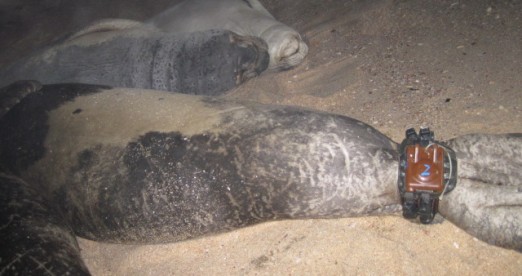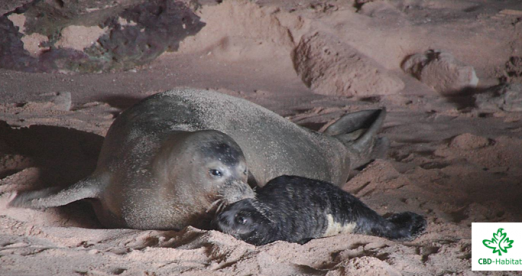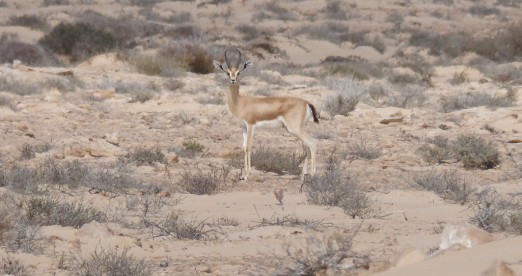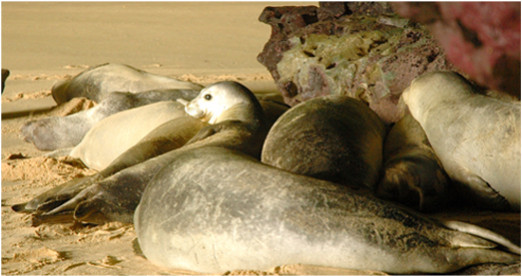Monitoring of the Monk seal at Cabo Blanco using the GPS-Fastloc technology
Publicado por Fundación CBD-Habitat
The Mediterranean monk seal is a marine animal and the most part of its life cycle happens at sea. It seems an obvious statement, doesn’t it? Even so, until not too long ago, the marine habitat of interest for these seals was completely unknown: it didn’t exist information about their feeding areas, distribution range, interaction areas with fisheries activity u other threats for the species, etc. Even though this information was and is indispensable to adopt efficient conservation measures!
It was on 2007, when our team developed and started to use with success at Cabo Blanco, an innovative tag and monitoring methodology using GPS-Fastloc receptors on individuals of the monk seal colony:
Since then, this technical tool has been applied with success to numerous animals of the colony (mainly adult males) and since then it has been improving notably. On a next post we will get deeper into the methodology and results.
Up to date, none wild animal of other Mediterranean monk seal populations has been monitored using GPS tags. Therefore, the only available information, is the one obtained at Cabo Blanco.
But which are the next challenges? On these days we are being testing a new generation of GPS-Fastloc receptors (Fastloc 3) and the data reception base, manufactured by Sirtrack. Once set-up the new equipment, the next objectives will be to complete the monitoring of reproductive females and juveniles at Cabo Blanco and something completely new: to tag for the first time individuals of monk seal at Madeira! This last challenge will be possible thanks to the life project LIFE Madeira Monk seal, funded by the European Union and developed by CBD-Habitat foundation and the SPNM (Serviço do Parque Natural da Madeira)
We will keep you up dated on that too!!
It was on 2007, when our team developed and started to use with success at Cabo Blanco, an innovative tag and monitoring methodology using GPS-Fastloc receptors on individuals of the monk seal colony:
Since then, this technical tool has been applied with success to numerous animals of the colony (mainly adult males) and since then it has been improving notably. On a next post we will get deeper into the methodology and results.
Up to date, none wild animal of other Mediterranean monk seal populations has been monitored using GPS tags. Therefore, the only available information, is the one obtained at Cabo Blanco.
But which are the next challenges? On these days we are being testing a new generation of GPS-Fastloc receptors (Fastloc 3) and the data reception base, manufactured by Sirtrack. Once set-up the new equipment, the next objectives will be to complete the monitoring of reproductive females and juveniles at Cabo Blanco and something completely new: to tag for the first time individuals of monk seal at Madeira! This last challenge will be possible thanks to the life project LIFE Madeira Monk seal, funded by the European Union and developed by CBD-Habitat foundation and the SPNM (Serviço do Parque Natural da Madeira)
We will keep you up dated on that too!!








